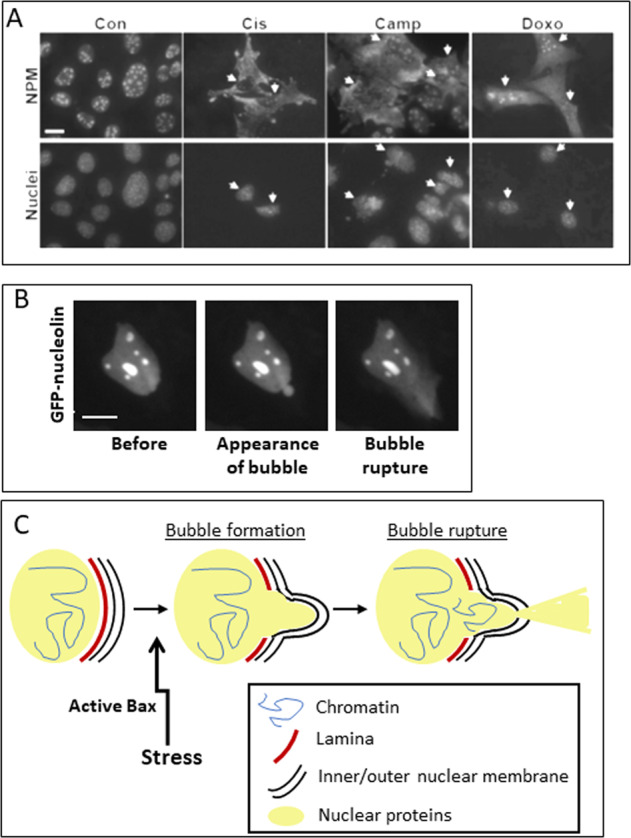Fig. 3. Stress-induced NPR and SIGRUNB.

a Redistribution of the nuclear protein nucleophosmin (NPM) in response to apoptotic stimuli. Wild type MEFs were untreated (Con) or treated for 24 h with cisplatin (Cis), camptothecin (Camp), or doxorubicin (Doxo), followed by staining with anti-NPM antibodies and Hoechst 33258 (to label nuclei), and thereafter visualized by fluorescence microscopy. The images after each treatment (upper and lower panels) represent the same field visualized separately for NPM labeling and Hoechst-stained nuclei. Arrows indicate cells exhibiting the redistribution of NPM and their nuclei. Size bar = 20 µm. (Modified from Lindenboim et al.50). b SIGRUNB induced by cisplatin treatment. GFP-nucleolin-expressing MEFs were treated with cisplatin and imaged by fluorescence microscopy after 15–24 h. Arrow indicates a bubble and right panel shows subsequent rupture. Size bar = 10 µm (Modified from Lindenboim et al.21). c Schematic diagram of SIGRUNB. In response to apoptotic stimuli/stress, Bax induces NPR by a process involving local disturbances in NE proteins, including lamin A/C, which results in the generation and subsequent rupture of nuclear protein-containing bubbles. The bubbles do not contain DNA at early stages and are encapsulated by nuclear pore complex-depleted regions of the NE (bubble formation). At later times, the bubbles rupture and discharges nuclear proteins into the cytoplasm (bubble rupture).
